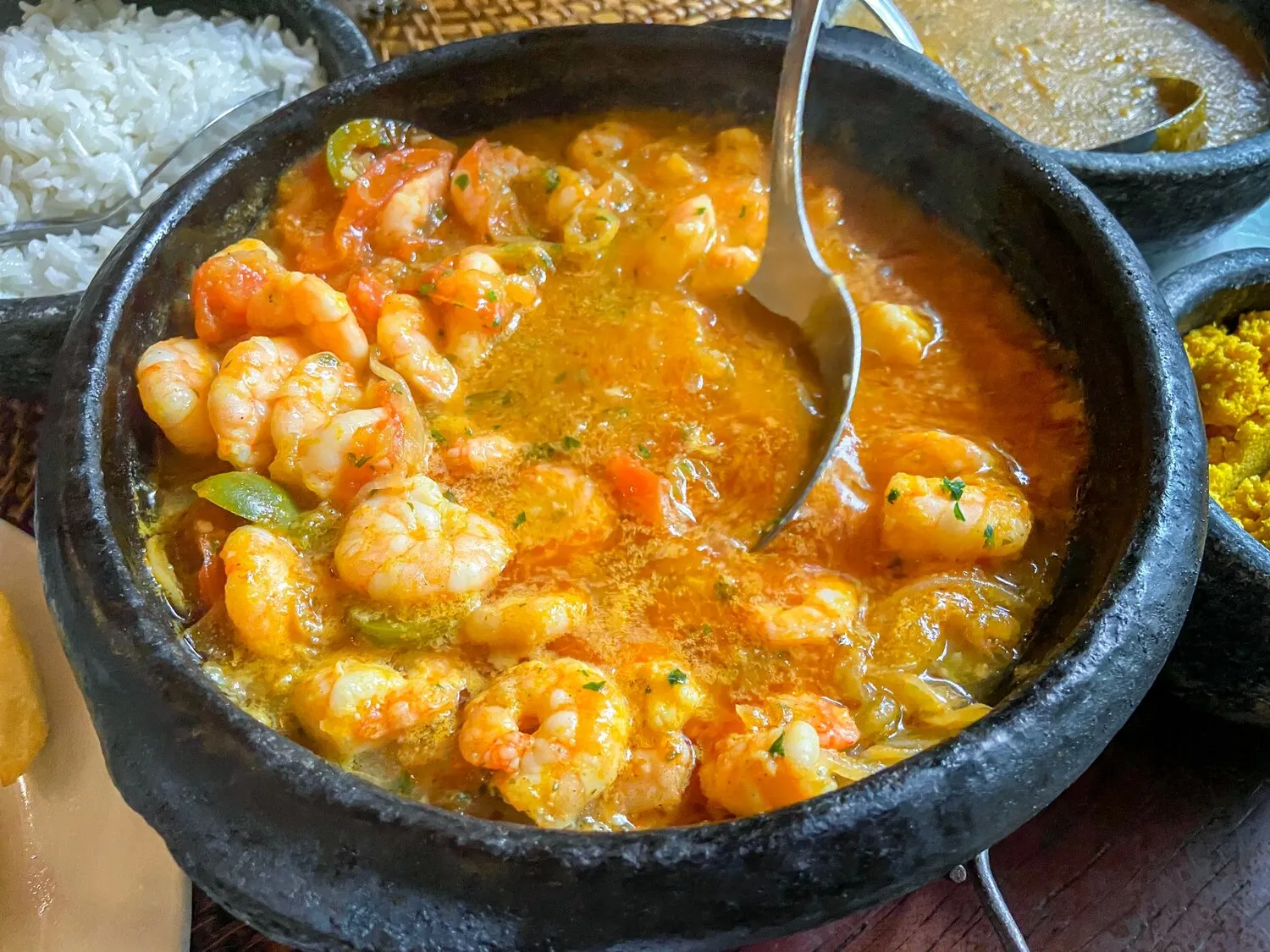
Moqueca Camarões
Shrimp moqueca served with rice
Nutrition Facts
* The % Daily Value (DV) tells you how much a nutrient in a serving of food contributes to a daily diet. 2,000 calories a day is used for general nutrition advice.
Moqueca's origins are intertwined with the indigenous peoples of Brazil's coastal regions, who cooked fish and seafood in clay pots with native ingredients. The dish was later influenced by Portuguese colonizers and enslaved Africans, who introduced ingredients like coconut milk, palm oil (dendê), and other spices, shaping the Moqueca into the diverse dish it is today.
Moqueca is a symbol of Brazilian coastal cuisine, particularly associated with the states of Bahia and Espírito Santo. It represents a fusion of cultures and a celebration of fresh seafood.
Regional Variations
While Moqueca Capixaba (from Espírito Santo) typically uses annatto seeds for color and is considered lighter, Moqueca Baiana (from Bahia) includes dendê oil and coconut milk, resulting in a richer, more flavorful dish. These variations reflect regional pride and culinary traditions.
Communal Dining
Moqueca is often served in a clay pot, encouraging communal dining and sharing among family and friends. It's a dish meant to be enjoyed slowly, with plenty of rice and pirão (a cassava flour porridge) to soak up the flavorful sauce.
Celebratory Dish
Moqueca is frequently served at special occasions and celebrations, representing abundance and the flavors of the Brazilian coast. It is a dish that connects people to their heritage and to the bounty of the sea.
Moqueca de Camarão is characterized by its rich, savory, and slightly sweet flavors, stemming from the combination of fresh shrimp, vegetables, coconut milk, and dendê oil.
The dominant flavor is the sweetness of the shrimp, balanced by the acidity of tomatoes and the sweetness of bell peppers and onions. Coconut milk adds a creamy richness and subtle sweetness, while dendê oil imparts a distinctive, slightly smoky, and vibrant flavor and color. Lime juice provides a bright acidity that cuts through the richness. Cilantro and other herbs contribute fresh, aromatic notes.
Freshness is Key
Use the freshest shrimp available. The better the quality of the shrimp, the more flavorful the dish will be. Look for shrimp that are firm, plump, and have a fresh, sea-like smell.
Don't Overcook the Shrimp
Shrimp cooks quickly and can become rubbery if overcooked. Add the shrimp towards the end of the cooking process and cook just until they turn pink and opaque.
Use Quality Dendê Oil
Dendê oil, derived from the African oil palm, has a unique flavor and color. Source high-quality dendê oil for the best results. Be aware that it can stain, so use caution when cooking with it.
Layer the Flavors
Build the flavor of the moqueca gradually by layering the ingredients. Sauté the onions, peppers, and garlic first to develop their sweetness before adding the tomatoes and other ingredients.
Explore additional Moqueca dishes and restaurants
Explore MoquecaDiscover top dining spots and culinary experiences in Natal.
Explore NatalLearn more about the food culture, restaurant scene, and culinary heritage of Brazil.
Explore Brazil